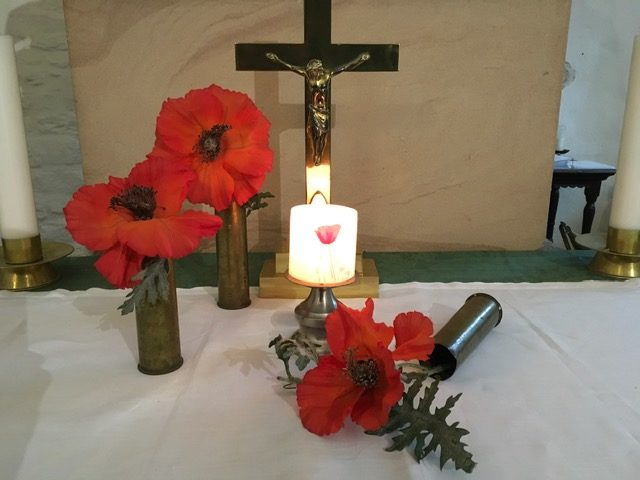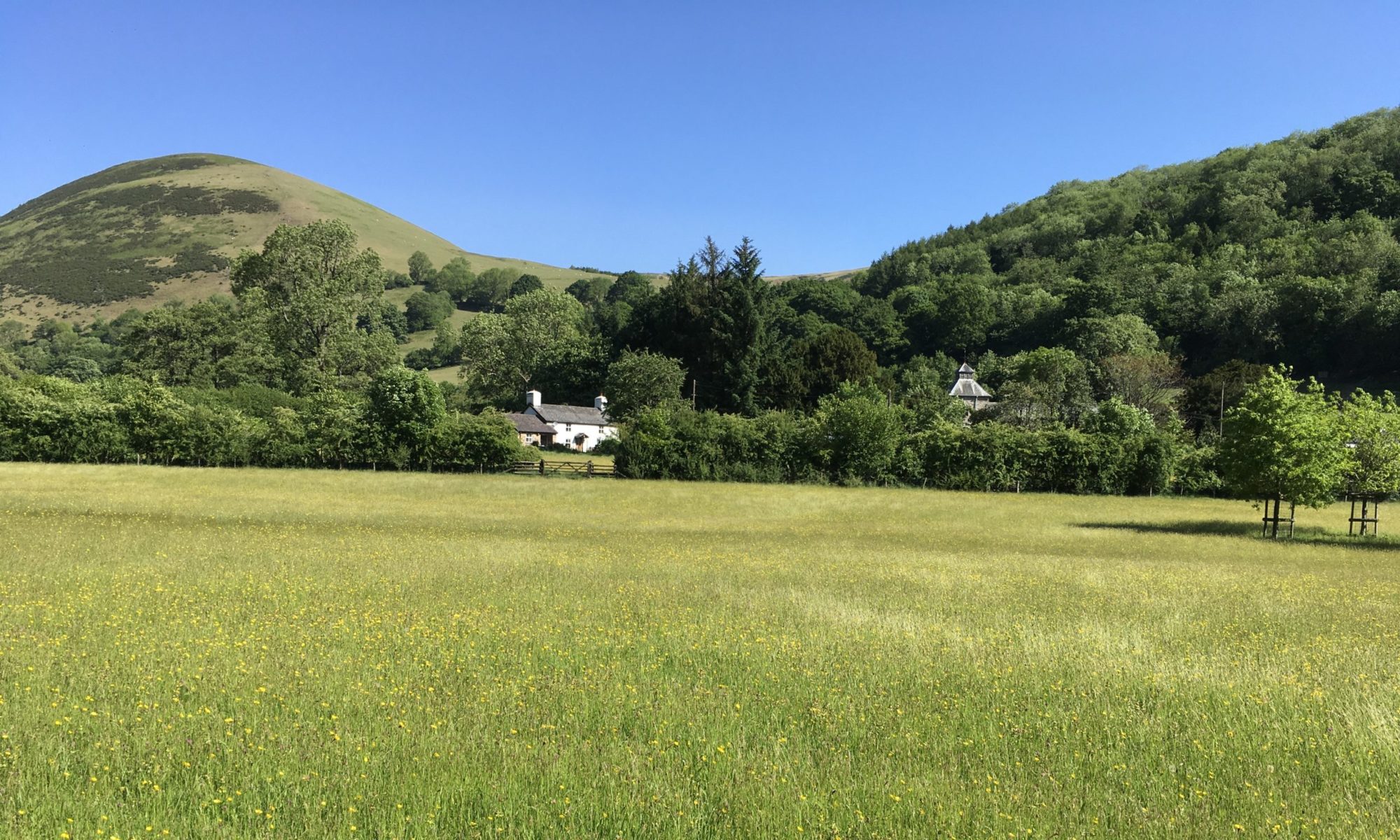Remembrance
Gas! GAS! Quick boys! An ecstasy of fumbling
Fitting the clumsy helmets just in time,
But someone still was yelling out and stumbling
And flound’ring like a man in fire or lime.—
Dim through the misty panes and thick green light,
As under a green sea, I saw him drowning.
In all my dreams before my helpless sight,
He plunges at me, guttering, choking, drowning.
If in some smothering dreams, you too could pace
Behind the wagon that we flung him in…….
My friend, you would not tell with such high zest
To children ardent for some desperate glory,
The old Lie: Dulce et decorum est
Pro patria mori.
Wilfred Owen
This famous poem, Dulce et decorum est, is particularly appropriate for the graves in St Melangell’s Churchyard of those who died in warfare or later succumbed to their injuries. The First World War was known as the chemist’s war because of the development of chlorine, phosgene and mustard gas which created deadly hazards not only for soldiers and civilians at the Front but also for those workers manufacturing it. Used by all sides, by the time of the Armistice in 1918 gas had created more than 1.3 million casualties and approximately 90,000 deaths, a relatively low figure as it was only used for the first time at Ypres. However, the psychological effects of ‘gas fright’ and the damage done to the bodies of those who survived had far-reaching consequences, some of which affected those who lie in Pennant Melangell’s churchyard.
Private Edward Evans, for example, was born in Llangynog and worked as a porter with the Tanat Valley Railway Company. His battalion was fighting on the Western Front throughout World War One until demobilisation in 1919 and, although Edward survived this, he died of tuberculosis aged 33 on 3rd January 1920 at home in Llangynog. This happened to many troops who had been gassed as the severe scarring in their lungs left them particularly susceptible to TB and it also happened to another local man, Richard Lewis.
Richard worked as a waggoner at Llangynog Granite Quarries before enlisting with 10th Battalion, King’s Own Scottish Borderers and being involved in the final days of warfare in Flanders before returning home. He died in hospital in Oswestry in December 1919 having been injured 13 weeks earlier by stone falling at the quarry, causing him head injuries and paralysis which was affected by his TB. At the age of 37, he left a widow and two young children – how did they cope, after the joy of seeing him return from war only to die in this way?
Richard’s death must also have been a terrible blow for his parents, who lost two other sons during the Great War. Born in Llangynog, William worked as a farm labourer before being posted to Egypt with the Montgomeryshire Yeomanry in March 1916. His battalion fought at the battle of Beersheba in 1917 where hand-to-hand combat created 1,010 wounded and 136 dead – William amongst them. He was buried at the War Cemetery in Beersheba, Palestine and is also commemorated on a headstone here, shared with his brother, Thomas.
Thomas grew up in Llangynog but worked as a collier’s haulier in Rhondda before joining the East Yorkshire Regiment. In 1915, his battalion was in the area when gas was deployed for the first time at Ypres and fought throughout the war on the Western Front. Thomas survived all this but died of influenza, accelerated by the effects of gas, on Armistice Day 1918 at the age of 28. Having witnessed the dreadful consequences of using gas, no wonder Wilfred Owen wrote so horrifically of its effects and of “The old lie: Dulce et decorum est pro patria mori.” – It is sweet and fitting to die for your country. Ironically, the poem was published posthumously in 1920, Owen being killed in action just a week before the end of the Great War – what other fine poems was the world denied by his untimely death?
Owen wrote of the terrible dreams he had after seeing a soldier exposed to gas and of the “smothering dreams” others may have too. Many of those who have survived combat have suffered terrible nightmares afterwards and had to live with dreadful memories. One of them was Meurig Owen, whose immediate family still live locally. At 18, he was sent out to Egypt, India and on to Burma where, in the terrible heat, humidity and fear of the jungle, water was rationed and malaria rife. Food being short and the circumstances taking their toll, the Forgotten Army had to fight on for months after VE Day and so awful were his experiences that, when the British Legion offered to pay the expenses of those who wanted to return in peacetime, Meurig and others chose not to go. The Burma Star is emblazoned on his headstone in recognition of all he, and so many others from nations near and far, endured. Amongst them were Americans Arthur William Joseph Johnson, Benjamin Lewis Orr and Israel Orr as well as James Crandall who flew with the RAF and submariner Jim Swindon who joined the Royal Navy in WW2. So many lives affected by all nations involved, so much courage and suffering shown, such sacrifice and memories to be honoured during this time of Remembrance Sunday……
As the photo shows, on the altar at St.Melangell’s are used shells now containing poppies as the conflicts and consequences of the past are remembered in a different way this year in the context of the battle being waged against Covid-19. In the lives lost, the families affected, the support being given and the sacrifices being made by so many, the struggle and cost of freedom, peace of mind, safety and well-being continues. As Meurig’s headstone reads, “Nad a’n angof yr atgofion” – the memories will not be forgotten – and the Kohima epitaph in honour of those who fought in the Burma Campaign, also reminds us that “For your tomorrow we gave our today.”
We will remember them.


